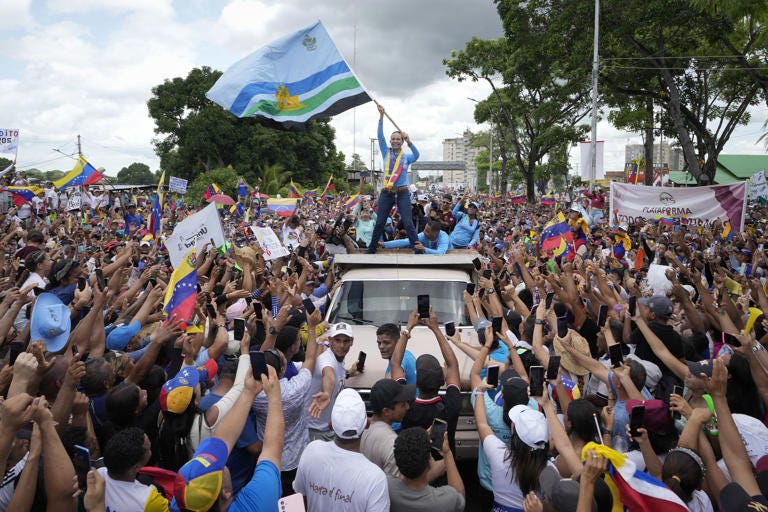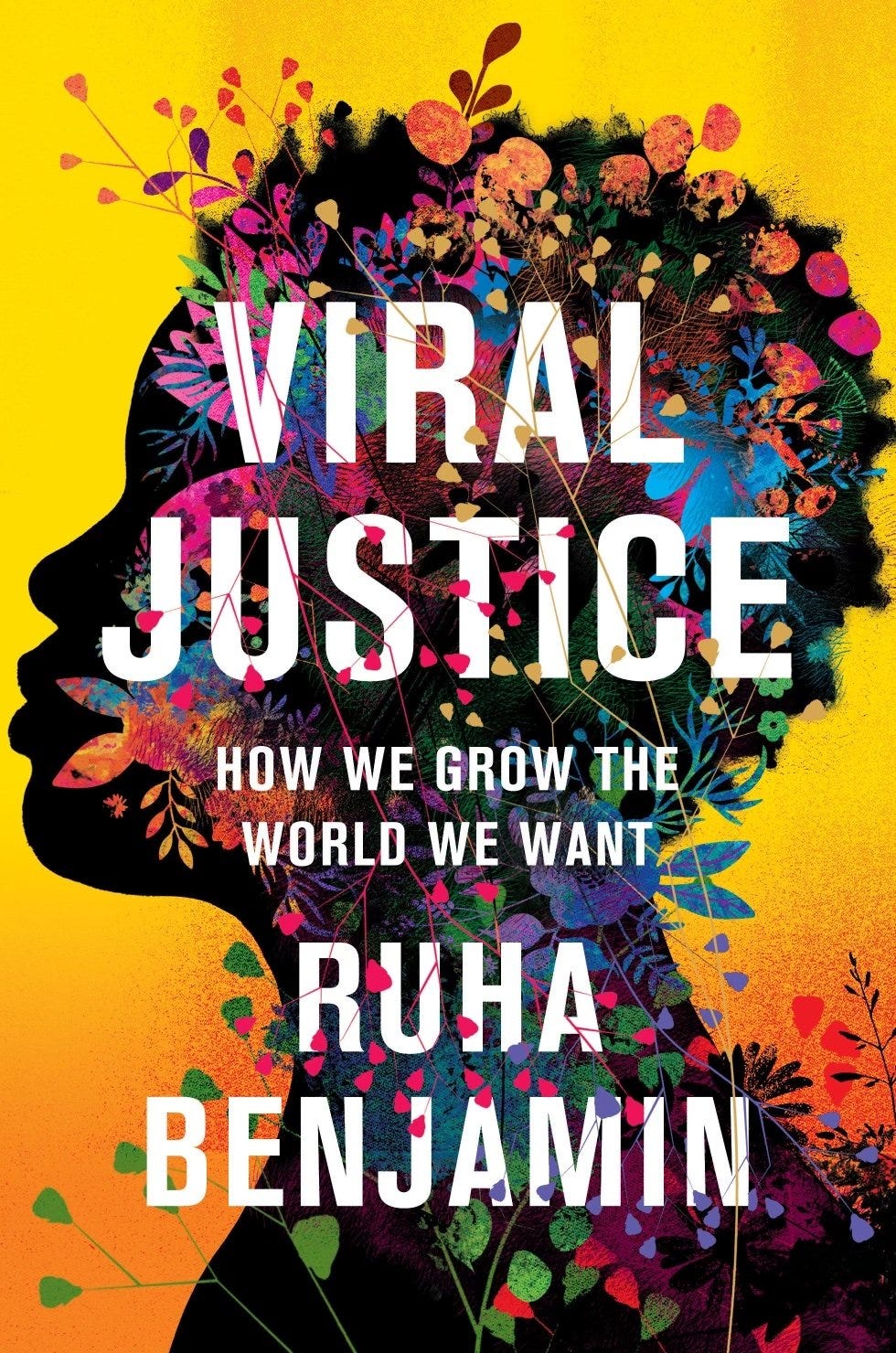The 221st Block: All the dark things (except Dark Brandon)
Also, how are we feeling about meme warfare?
This week…
Your reading time is about 7 minutes. Let’s start.

You’d think it was tough to get the news that was not US-focused last week or the week before… Welp. Good thing you’re here then.
So here’s a selection of top stories on my radar, a few personal recommendations, and the chart of the week.
ICYMI: The Previous Block tried to look at the news beyond the US (like we try to, every week). FWIW:
Moscow jails Russian-American journalist Alsu Kurmasheva for over six years by Lucy Papachristou et al. for Reuters.
I pushed for press freedom in Hong Kong. The Wall Street Journal fired me by Selina Cheng for CJR.
CORRECTION NOTICE: None notified.DARK WEB
We bought everything needed to make $3 million worth of fentanyl
Maurice Tamman, Laura Gottesdiener, and Stephen Eisenhammer for Reuters:
The trade hinges on chemicals known as “precursors,” which are the drug’s essential ingredients. Compounds called piperidines are the core of fentanyl’s structure. Other precursors provide the remaining building blocks. Combined through chemical reactions, these precursors create a drug 50 times stronger than heroin.
The problem for regulators: Many of the same chemicals used to make fentanyl are also crucial to legitimate industries, from perfumes and pharmaceuticals to rubber and dyes. Tightly restricting all of them would upend global commerce. And because of fentanyl’s potency, even small quantities of these precursors can produce vast numbers of tiny pills using a simple manufacturing process—rendering the ingredients, the final product and the supply chain easy to conceal from authorities.
Anyone with a mailbox, an internet connection and digital currency to pay the tab can source these chemicals, a Reuters investigation found.
All it took was some $3,600 and a web browser. Loosely linked:
Fentanyl’s deadly chemistry: How rogue labs make opioids by Daisy Chung, Laura Gottesdiener, and Drazen Jorgic for Reuters.
In a review of material posted on the dark web, the Internet Watch Foundation found that deepfakes featuring children were becoming more extreme by Kevin Collier for NBC.
Secret DEA files show agents joked about rape in a WhatsApp chat. Then one of them was accused of it by Jim Mustian and Joshua Goodman for AP.
DARK AI
Pressured to relocate, Microsoft’s AI engineers in China must choose between homeland and career
Viola Zhou for Rest of World:
Partly thanks to government support on science and engineering education, China has produced a large number of global tech industry workers. Nearly half of the world’s top 20% AI researchers completed their undergraduate studies in China, according to a report on global AI talent published by think tank MacroPolo. Meanwhile, wages are lower in China than in the US. Software engineers in China are paid about a third of what their peers make in Silicon Valley, according to salary data site Levels.fyi.
But a growing distrust of China by US politicians is making such collaboration, as well as the jobs of Chinese engineers, precarious. Despite China’s slowing economic growth and restricted freedoms, the tech giant’s high-earning Chinese staff are content with their life at home, where they enjoy cheap food, low crime rates, and child-care support from their parents. At the same time, they fear losing their Microsoft jobs if they refuse to relocate.
As the deadline for accepting the offers approached, they weighed everything from children’s education to dating prospects to immigration policies. Loosely linked:
How the AI industry profits from an unprotected digital working class in Brazil by Tatiana Dias and Sofia Schurig for The Intercept Brasil via Pulitzer Center.
How tech companies squeeze out Ukrainian press by Andrey Bobrykin for CJR.
An academic publisher struck an AI data deal with Microsoft—without authors’ knowledge by Wellet Potter (University of New England) for The Conversation.
AI deepfake faces detected using astronomy methods by Sarah Wild for Nature.
DARK SOCMED
The PhD influencers logging lab life on TikTok and Instagram
Carissa Wong for Nature:
In 2022, cancer biologist Ria Chopra posted a reel of herself working through the night in the lab. Chopra is studying how a disrupted body clock might accelerate the growth of cancer — work that involves monitoring the protein levels in cancer cells from 10 p.m. to 7 a.m.. “I have to sleep in the lab and collect samples every four hours,” says Chopra, who studies at the Chinese University of Hong Kong.
Chopra has gained more than 15,000 followers on Instagram partly by posting such nitty-gritty scenes of lab life: one post shows her collecting prostate cancer cells from storage in liquid nitrogen, staining them with a bright green fluorescent marker and placing the samples in a -80 °C freezer. She sets most of her reels to dance music—a nod to her other passion and inspiration for her Instagram username phdwhodances.
Life could’ve been different for some of us (me)... Loosely linked:
Meta removes 63,000 Instagram accounts in Nigeria over sextortion scams by MacDonald Dzirutwe for Reuters.
In Indonesia, social media is a hunting ground for religious minorities by Adi Renaldi for Rest of World.
We unleashed Facebook and Instagram’s algorithms on blank accounts. They served up sexism and misogyny by Josh Taylor for The Guardian.
TikTok goes wild for backstage Olympics videos by Ellie Violet Bramley for The Guardian.
Other curious links, including en español et français

PHOTO ESSAY | One goal is to destroy Ukrainian identity: the haunting images of Russia’s prisoners of war by Zoya Shu (photography) and Luke Harding for The Guardian.
PHOTOJOURNALISM ANALYSIS | Crafting Trump’s hero narrative: Media’s visual complicity in the assassination drama—and the shoe panic explained by Michael Shaw for Reading the Pictures.
Meet the woman who changed the way France reports the weather by Lottie Limb for Euronews.
Behind the scenes of China’s first independent fact-checking initiative by Wei Xing for IJNet.
Google’s plan to turn off third-party cookies in Chrome is dying by Richard Lawler for The Verge. Cookies are dead; long live cookies!
People with disability know bodies can be funny – so it’s OK that you’re laughing at the Paralympics TikTok account by Shane Clifton (University of Sydney) for The Conversation. Note: This piece is written by someone with a disability.
El método gallego ya es un quebradero de cabeza para la DGT, cómo WhatsApp se ha convertido en un arma anti-radares por Alberto de la Torre en Xataka.
El cirujano que enseña poesía a futuros médicos: En la camilla y en el papel busco la simetría por Vivien Doherty Luduvice en El País.
elDiarioAR lanza su unidad de investigación: una apuesta a más y mejor periodismo por Emilia Delfino en elDiarioAR.
Afroderm, ou la fin du tabou du tattoo sur peaux foncées par Eva Sauphie dans Jeune Afrique.
Utiliser l’IA pour lutter contre la haine envers des populations autochtones sur internet dans Radio-Canada.
Cérémonie d’ouverture des JO 2024 : Sasha Zhoya portera une jupe et Auriana Lazraq-Khlass un costard masculin par Caroline Vigent dans Libération.
What I read, listen, and watch
I’m reading Viral Justice (2022) by Ruha Benjamin. She doesn’t miss.
I’m listening to QAA Podcast in which Caio Almendra, editor at The Intercept Brasil talked about the Bolsonaro crime family.
I’m watching an Insider’s piece on how Olympic sports doping actually works. It features Victor Conte, who used a then-undetectable anabolic steroid in programmes with athletes such as Marion Jones. Jones was one of my earliest heroes and her fall from grace taught my young and impressionable self never to have idols, and probably contributed to my being a cynic.
Chart of the week
In an unsurprising finding, the US’ image deteriorates in parts of Asia, according to a Pew Research Center survey, as reported by Katharina Buchholz for Statista.




Wow, 'All the dark things' definitely sets the tone! It's tough sifting through all the serious news, especially when it's not US-focused. Thanks for highlighting these important stories. On a lighter note, speaking of distinct styles, I just discovered this cool brat font (https://www.brat-font.com/) generator – perfect for making some playful text art!